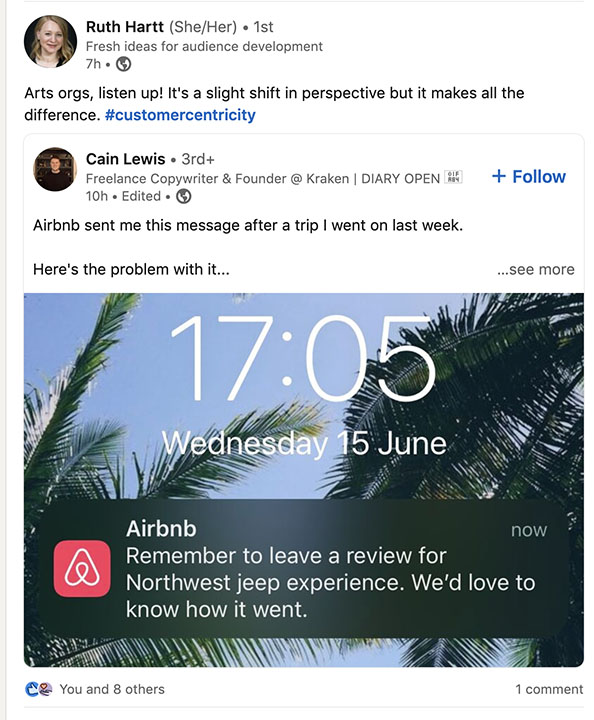I haven’t really been paying close attention to all the recent stories about the re-opening of the renovated Geffen Hall at Lincoln Center, but a New Yorker article about how the acoustics have been re-engineered caught my notice. Our main guides through the article are acoustical-engineers Christopher Blair and Paul Scarbrough of the firm, Akustiks, who were hired to solve the sound problems of the hall.
The fact they were advising that the adhesive coating on wood paneling be 3/16 inch thick rather than 1/8 and were concerned that the fabric samples for the seating was too thin, you get a sense of just how exacting the tolerances they work with. So you can imagine just how upsetting it was to the original acoustic engineer when 200 seats were added to the initial construction of the hall in the 1950s without consulting with him. That decision apparently has contributed to the sound problems of the hall ever since.
The new design eliminates 200 seats, increases the pitch of the seating and moves the orchestra 25 feet closer to the audience. This will mean instead of 30% of seats being 100 feet or more from the orchestra, only nine percent will.
But Blair and Scarbrough say that the audience experience of the space is of greater influence on how the room sounds than all the science based adjustments they are implementing, something known as psychoacoustics.
Scarbrough said that the Royal Festival Hall of London was one of his favorite venues: “You cross the Thames on the Hungerford Bridge, you can see Parliament, the London Eye, St. Paul’s Cathedral. The lobby is active, it’s like the living room for all of South Bank. You progress upstairs, and—”
“—and it almost makes up for the acoustics,” Blair interrupted.
“True. But you feel you’re in a special place. It’s the psychoacoustics that works so well there.”
[…]
People often have a special feeling about listening to opera outdoors, under the stars with a bottle of wine. The sound is usually weak, or amplified, or in other ways just not that good—yet, still, great.
The author of the New Yorker piece, Rivka Galchen, cites the way sound plays in Hagia Sophia, Chichén Itzá and Toshogu Shrine, in Nikko, Japan as examples of how people have been integrating psychoacoustics to create a sense of importance to a place.
For Geffen Hall, these principles aren’t just being applied inside the hall, but in terms of how audiences approach the doors and move throughout the space. We talk about how there is often a sense that you have to possess inside knowledge to attend an orchestra concert, but architect Gary McCluskie is quoted as saying that was the case if you wanted to even find the door.
“With the old hall, it was difficult to even find the entrance, unless you already knew where it was,” McCluskie said. They wanted the hall to feel welcoming to everyone, not only to those people who were—in whatever way—in the know.
Clearly, a great deal of effort and attention is being paid to getting things right and erasing past perceived flaws with the space currently known as Geffen Hall. In reading the article, I also became aware of the time and effort that went into writing the piece. This piece is set to appear in the print edition of the New Yorker on October 17, but Rivka Galchen notes that she first met with Blair and Scarbrough to discuss their work in November 2021, spoke to New York Philharmonic conductor Jaap van Zweden in June and references people she spoke with at two tuning rehearsals which started in August.
I just wanted to note that while I knock out these posts in the course of an hour or so, I need to acknowledge I am benefiting from much greater efforts made by others.



Thanks for what you are doing to bring cultural change to the arts. It is so important to represent everyone.…